1. de Benoist B, McLean E, Egli I, Cogswell M. WHO global database on anaemia. Geneva: World Health Organization;2008.
2. Kassebaum NJ, Jasrasaria R, Naghavi M, Wulf SK, Johns N, Lozano R, et al. A systematic analysis of global anemia burden from 1990 to 2010. Blood. 2014; 123:615–624. PMID:
24297872.

3. Fein HG, Rivlin RS. Anemia in thyroid diseases. Med Clin North Am. 1975; 59:1133–1145. PMID:
1099360.

4. M'Rabet-Bensalah K, Aubert CE, Coslovsky M, Collet TH, Baumgartner C, den Elzen WP, et al. Thyroid dysfunction and anaemia in a large population-based study. Clin Endocrinol (Oxf). 2016; 84:627–631. PMID:
26662849.
5. Lippi G, Montagnana M, Salvagno GL, Guidi GC. Should women with abnormal serum thyroid stimulating hormone undergo screening for anemia? Arch Pathol Lab Med. 2008; 132:321–322. PMID:
18318574.

6. Omar S, Hadj Taeib S, Kanoun F, Hammami MB, Kamoun S, Ben Romdhane N, et al. Erythrocyte abnormalities in thyroid dysfunction. Tunis Med. 2010; 88:783–788. PMID:
21049405.
7. Wopereis DM, Du Puy RS, van Heemst D, Walsh JP, Bremner A, Bakker SJL, et al. The relation between thyroid function and anemia: a pooled analysis of individual participant data. J Clin Endocrinol Metab. 2018; 103:3658–3667. PMID:
30113667.

8. Kawa MP, Grymula K, Paczkowska E, Baskiewicz-Masiuk M, Dabkowska E, Koziolek M, et al. Clinical relevance of thyroid dysfunction in human haematopoiesis: biochemical and molecular studies. Eur J Endocrinol. 2010; 162:295–305. PMID:
19903799.

9. Szczepanek-Parulska E, Hernik A, Ruchała M. Anemia in thyroid diseases. Pol Arch Intern Med. 2017; 127:352–360. PMID:
28400547.

10. Bremner AP, Feddema P, Joske DJ, Leedman PJ, O'Leary PC, Olynyk JK, et al. Significant association between thyroid hormones and erythrocyte indices in euthyroid subjects. Clin Endocrinol (Oxf). 2012; 76:304–311. PMID:
21913954.

11. Schindhelm RK, ten Boekel E, Heima NE, van Schoor NM, Simsek S. Thyroid hormones and erythrocyte indices in a cohort of euthyroid older subjects. Eur J Intern Med. 2013; 24:241–244. PMID:
23276452.

12. Lippi G, Danese E, Montagnana M. Thyroid hormone levels are associated with anisocytosis in a cohort of euthyroid older outpatients. Eur J Intern Med. 2014; 25:e4–e5. PMID:
23579168.

13. Kim WG, Kim WB, Woo G, Kim H, Cho Y, Kim TY, et al. Thyroid stimulating hormone reference range and prevalence of thyroid dysfunction in the Korean population: Korea National Health and Nutrition Examination Survey 2013 to 2015. Endocrinol Metab (Seoul). 2017; 32:106–114. PMID:
28116874.

14. Levey AS, Coresh J, Greene T, Stevens LA, Zhang YL, Hendriksen S, et al. Using standardized serum creatinine values in the modification of diet in renal disease study equation for estimating glomerular filtration rate. Ann Intern Med. 2006; 145:247–254. PMID:
16908915.

15. Beutler E, Waalen J. The definition of anemia: what is the lower limit of normal of the blood hemoglobin concentration? Blood. 2006; 107:1747–1750. PMID:
16189263.

16. Touam M, Guery B, Goupy C, Menoyo V, Drueke T. Hypothyroidism and resistance to human recombinant erythropoietin. Nephrol Dial Transplant. 2004; 19:1020–1021. PMID:
15031379.

17. Christ-Crain M, Meier C, Huber P, Zulewski H, Staub JJ, Muller B. Effect of restoration of euthyroidism on peripheral blood cells and erythropoietin in women with subclinical hypothyroidism. Hormones (Athens). 2003; 2:237–242. PMID:
17003028.

18. Cinemre H, Bilir C, Gokosmanoglu F, Bahcebasi T. Hematologic effects of levothyroxine in iron-deficient subclinical hypothyroid patients: a randomized, double-blind, controlled study. J Clin Endocrinol Metab. 2009; 94:151–156. PMID:
18984662.

19. Perrin MC, Blanchet JP, Mouchiroud G. Modulation of human and mouse erythropoiesis by thyroid hormone and retinoic acid: evidence for specific effects at different steps of the erythroid pathway. Hematol Cell Ther. 1997; 39:19–26. PMID:
9088934.

20. Gaskell H, Derry S, Andrew Moore R, McQuay HJ. Prevalence of anaemia in older persons: systematic review. BMC Geriatr. 2008; 8:1. PMID:
18194534.

21. Cooper DS, Biondi B. Subclinical thyroid disease. Lancet. 2012; 379:1142–1154. PMID:
22273398.

22. Jeon MJ, Kim WG, Kwon H, Kim M, Park S, Oh HS, et al. Excessive iodine intake and thyrotropin reference interval: data from the Korean National Health and Nutrition Examination Survey. Thyroid. 2017; 27:967–972. PMID:
28471294.

23. Wolf G, Muller N, Hunger-Battefeld W, Kloos C, Muller UA. Hemoglobin concentrations are closely linked to renal function in patients with type 1 or 2 diabetes mellitus. Kidney Blood Press Res. 2008; 31:313–321. PMID:
18791327.

24. Sun MT, Hsiao FC, Su SC, Pei D, Hung YJ. Thyrotropin as an independent factor of renal function and chronic kidney disease in normoglycemic euthyroid adults. Endocr Res. 2012; 37:110–116. PMID:
22571510.

25. Nordenberg D, Yip R, Binkin NJ. The effect of cigarette smoking on hemoglobin levels and anemia screening. JAMA. 1990; 264:1556–1559. PMID:
2395196.

26. Wolfe F, Michaud K. Anemia and renal function in patients with rheumatoid arthritis. J Rheumatol. 2006; 33:1516–1522. PMID:
16881108.
27. Gaspar BL, Sharma P, Das R. Anemia in malignancies: pathogenetic and diagnostic considerations. Hematology. 2015; 20:18–25. PMID:
24666207.

28. Styszynski A, Mossakowska M, Chudek J, Puzianowska-Kuznicka M, Klich-RaczkaA , Neumann-Podczaska A, et al. Prevalence of anemia in relation to socio-economic factors in elderly Polish population: the results of PolSenior study. J Physiol Pharmacol. 2018; 69:75–81. PMID:
29769423.
29. Guralnik JM, Eisenstaedt RS, Ferrucci L, Klein HG, Woodman RC. Prevalence of anemia in persons 65 years and older in the United States: evidence for a high rate of unexplained anemia. Blood. 2004; 104:2263–2268. PMID:
15238427.

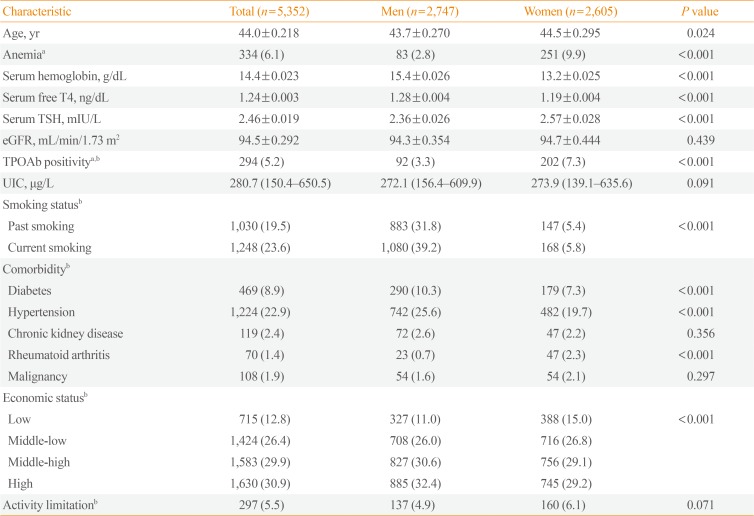
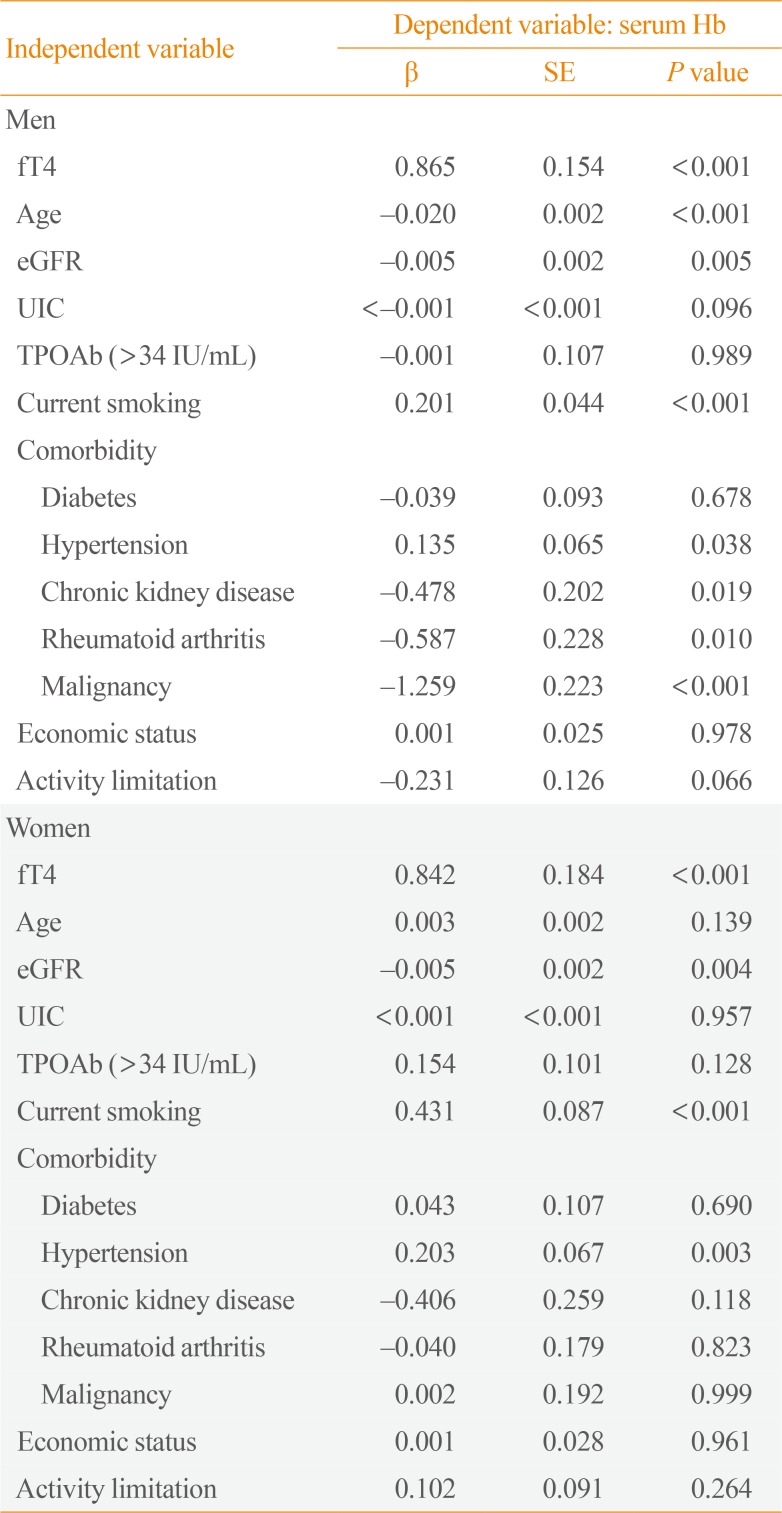
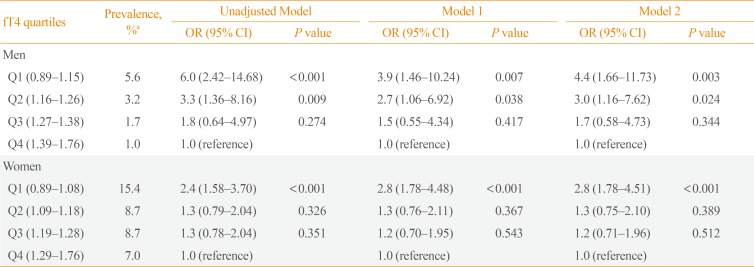
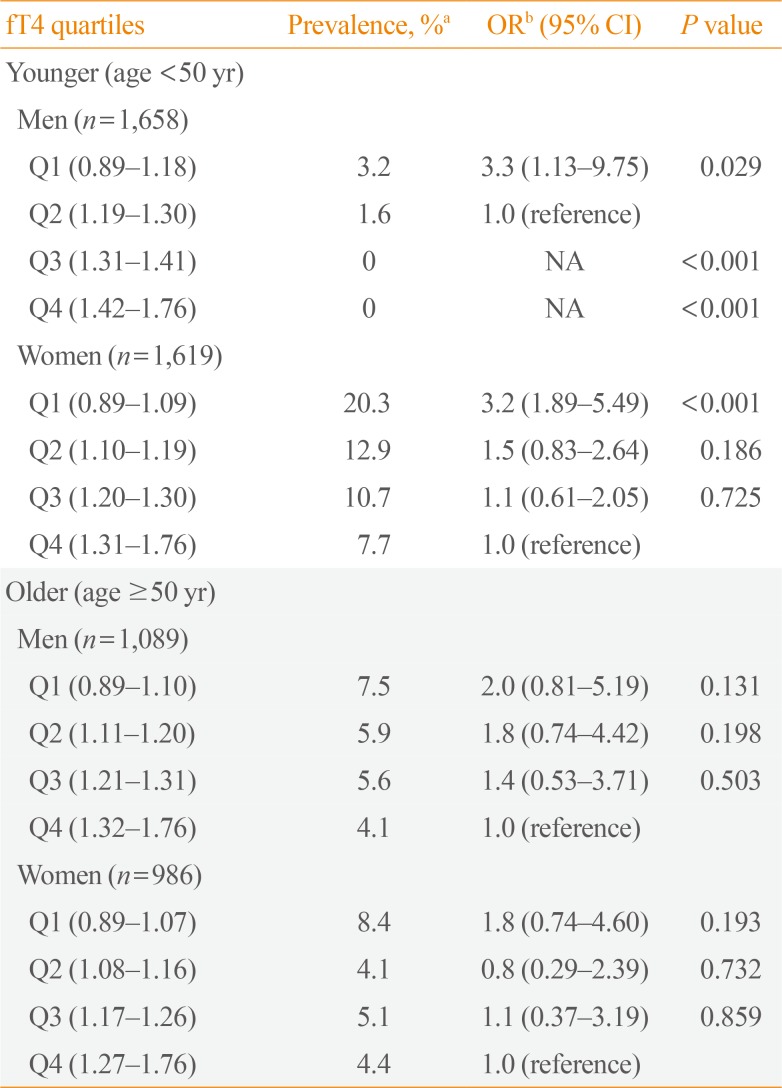




 PDF
PDF ePub
ePub Citation
Citation Print
Print



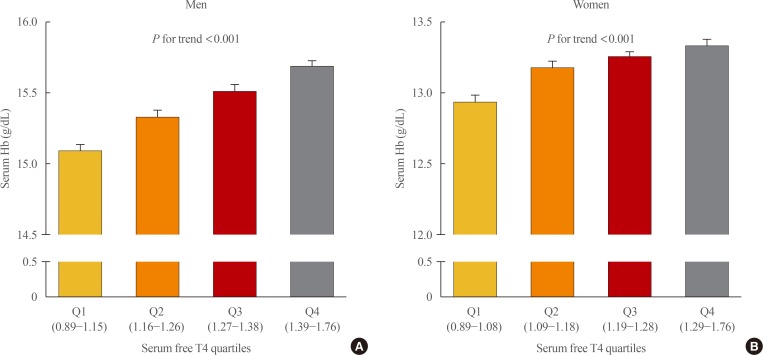
 XML Download
XML Download